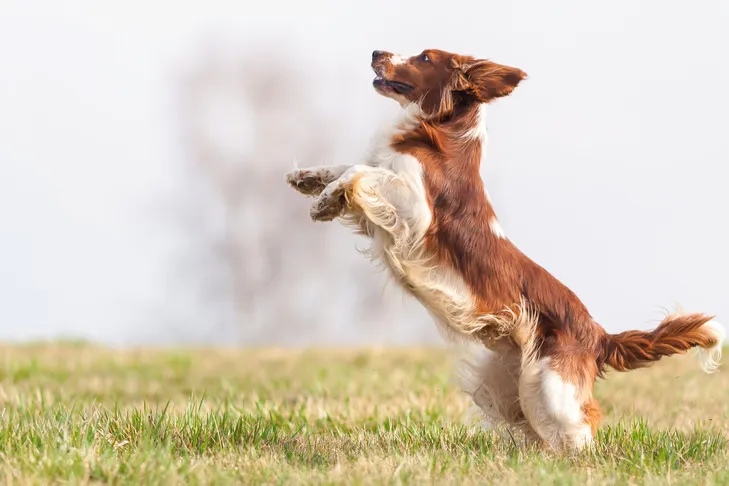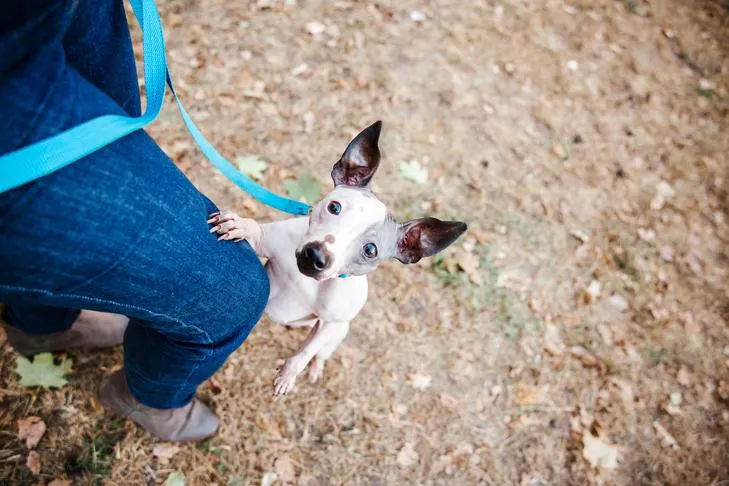Few things are as heartwarming as the exuberant greeting of a dog, but when that excitement translates into jumping up, it can quickly become an annoyance or even a hazard. Whether it’s a large breed knocking over a child or an elderly person, or a small dog leaving muddy paw prints on your clean clothes, jumping can be a challenging behavior to manage. Your dog isn’t trying to be mischievous; they’re often simply trying to say “hello” face-to-face or seeking your attention, which jumping effectively provides. Understanding this natural canine instinct is the first step toward teaching them a more appropriate way to greet people. This guide will help you understand how to keep my dog from jumping up by providing ten practical tips to teach your canine companion polite greeting behaviors, ensuring they know exactly how to interact with humans.
Only Reward Calm Greetings with All Four Paws on the Floor
The most effective strategy for managing unwanted behaviors is to teach your dog an incompatible alternative. Instead of focusing solely on what not to do, guide them toward what to do. For jumping, this means teaching your dog to keep all four paws firmly on the floor during greetings. They simply cannot jump and stand simultaneously. Alternatively, you might prefer them to sit or lie down when greeting. The key is to consistently provide attention and affection only when your dog is following your chosen rule. Inconsistency, like allowing jumping when you’re in casual clothes but not formal attire, will only confuse your dog and hinder their learning process.
Give Immediate Attention When Your Dog is Calm
Dogs are naturally inclined to repeat behaviors that yield desirable outcomes. Therefore, as soon as your dog adheres to your greeting rule – for instance, keeping their front feet on the floor – immediately reward them with praise and petting. Your attention is a powerful motivator for your dog, so ensure they receive it without delay when they exhibit the correct behavior, especially during the initial learning stages. Avoid waiting to remove your coat or shoes before acknowledging them; even a short delay can lead to impatience, prompting your dog to try other, less desirable methods to get your notice.
Withdraw Attention When Your Dog Jumps
Conversely, to extinguish jumping behavior, you must stop reinforcing it. This means never rewarding a behavior you wish to eliminate. If your dog jumps on you, promptly remove the very thing they desire: your attention. Try calmly turning your back or walking away. This teaches your dog that jumping has the opposite effect of what they intended. However, the moment your dog’s four paws are back on the floor, turn back and quietly offer praise and gentle petting. This consistent on-and-off switch for your attention will help your dog understand the consequences of their actions.
 Energetic Welsh Springer Spaniel leaping happily towards someone outdoors
Energetic Welsh Springer Spaniel leaping happily towards someone outdoors
Set Your Dog Up for Success
While ignoring jumping and rewarding proper greetings is effective, it can be frustrating for dogs as it relies on trial-and-error learning. You can expedite the process by proactively setting your dog up for success, making it easier for them to follow your greeting rule. If your rule is for them to sit, ask them to sit as soon as you enter the door. If “four on the floor” is your preference, encourage them to remain standing calmly. A highly effective method to prevent jumping is to scatter treats on the floor as you approach. Most dogs find free treats irresistible, and they cannot jump while sniffing the ground for food. By providing treats before they even consider jumping, you reward the desired “four on the floor” behavior with both attention and food. Your dog will quickly grasp the greeting rule, allowing you to gradually phase out the food rewards over time.
Always Reinforce Good Greeting Behavior
Your dog will learn appropriate greeting behavior more quickly if their actions immediately influence your attention. For example, keeping their front feet on the floor gains your attention, while jumping makes it disappear. This means you must consistently reward your dog every time they adhere to your greeting rule. Never withhold your attention once your dog’s feet are on the ground, even if you’re feeling annoyed after several minutes of persistent jumping. Inconsistency in your response will confuse your dog and undermine the training.
Avoid Physical Reprimands Like Grabbing or Pushing
It’s crucial to remember that your dog jumps to gain your attention. Even a seemingly negative physical response, such as grabbing your dog, holding their paws, or pushing them away, is still a form of attention. This means such actions can inadvertently reinforce the very behavior you’re trying to stop, potentially increasing the frequency of jumping in the long run. Furthermore, for many dogs, physical interaction can be misinterpreted as an invitation to engage in roughhouse play. They might return to jumping with even greater intensity, believing it’s all part of an exciting game, making it harder to establish calm greetings.
 American Hairless Terrier puppy playfully jumping up on its owner's leg in a grassy area
American Hairless Terrier puppy playfully jumping up on its owner's leg in a grassy area
Never Use Your Knee to Block Your Dog
A common, yet misguided, piece of advice is to use your knee to block your dog’s chest when they jump. As previously discussed, this physical interaction can be misinterpreted by some dogs as attention or an invitation to wrestle, leading to the opposite of the desired effect. More significantly, for most dogs, such a confrontational response can foster distrust and severely erode the human-canine bond. Your dog is simply attempting to greet you, and responding with punishment can be both confusing and potentially physically harmful. A damaged bond can then lead to other behavioral problems, such as a dog not coming when called or general anxiety around their owner.
Keep Greetings Low-Key
Because your dog is often overwhelmingly happy to see you, controlling their excitement can be incredibly difficult for them. It requires a significant amount of emotional self-control to resist the natural urge to jump and instead adhere to a new greeting rule. You can make this process much easier for your dog by keeping your own greetings low-key. Dogs are highly perceptive and can read our emotions; if you are overly excited or riled up, they will likely mirror that energy. Instead, strive to remain calm and quiet when you greet them, even when offering praise. As your dog begins to grasp the concept, you can gradually increase your enthusiasm until you can match their excitement without triggering unwanted jumping. Consider other training goals like how to train your dog to walk nicely to build overall impulse control.
Prevent Jumping on Guests Through Management
You are not the only one who can inadvertently reinforce your dog’s jumping behavior. Other family members, guests, and even strangers encountered outside can all contribute to the problem if you’re not diligent. To prevent this, employ management techniques. For example, keep your dog on a leash when guests arrive, limiting their ability to rush and jump. Even better, teach your dog a “place” command, sending them to a designated mat or bed, or utilize crate training by placing them in their crate when people come to the door, ensuring they are not in a position to jump. A baby gate can also be an effective barrier to block access to the front hall and manage exciting entryways. For particularly persistent jumpers, you might even consider specific training for related behaviors, such as how to stop a puppy jumping up on the sofa.
 A focused Boxer dog patiently lying down outdoors next to a man during a training session
A focused Boxer dog patiently lying down outdoors next to a man during a training session
Guide Guests and Strangers on How to Greet Your Dog
Don’t hesitate to clearly communicate your dog’s greeting rules to guests and even polite strangers. While your dog is still learning, ask people to completely ignore your dog unless you give them the okay to interact. It’s often best to avoid interactions with strangers until your dog has mastered polite greetings with friends and family who you know will cooperate with your training efforts. When encountering strangers outside, use a “watch me” cue to redirect your dog’s attention, or distract them with a hand touch or a favorite toy until the person has passed. This proactive approach reinforces good habits and prevents accidental reinforcement of jumping. If your dog gets overly excited even for walks, you might also find tips on how to get your puppy to go for a walk useful for managing their energy.
Learning How To Keep Your Dog From Jumping Up requires patience, consistency, and a clear understanding of canine behavior. By focusing on rewarding desired actions and removing attention for unwanted ones, you can effectively teach your dog a polite and safe way to greet people. Implementing these ten essential tips will not only improve your dog’s manners but also strengthen the bond you share, making every homecoming a joyful, calm, and positive experience. For more expert advice and detailed dog training guides, explore other articles on Dog Care Story.
